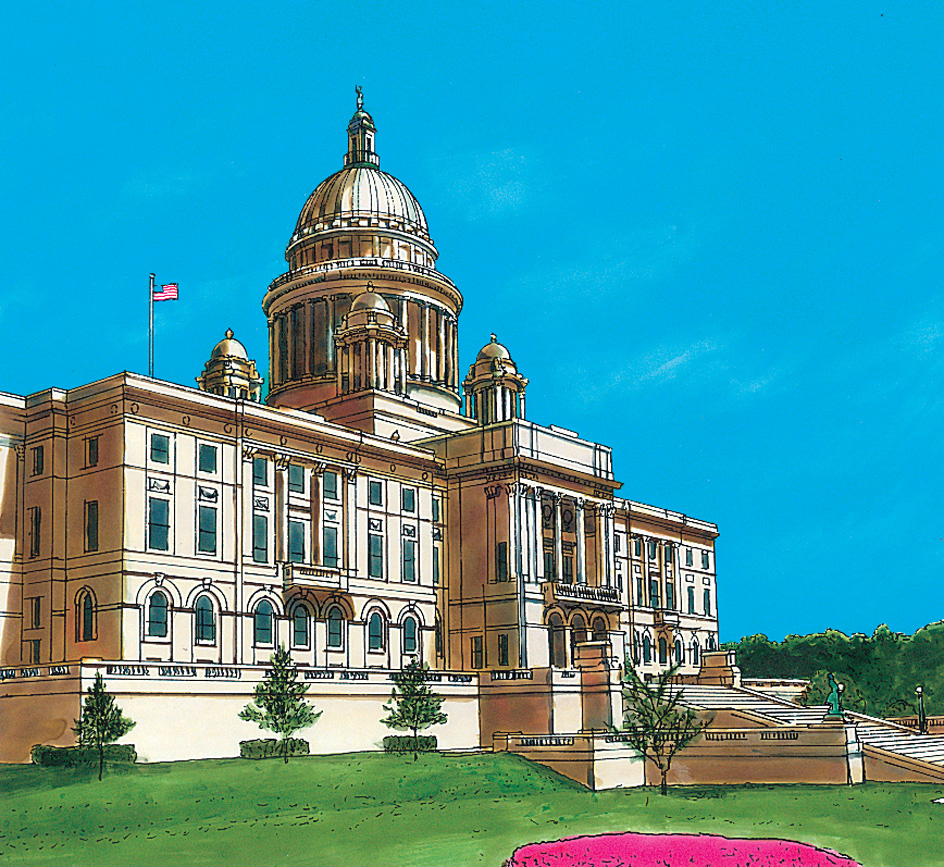Providence, << PROV ih duhns >> (pop. 190,934), is the capital and largest city of Rhode Island. About a sixth of the state’s people live in Providence, a major New England manufacturing center. Providence lies at the head of Narragansett Bay, in the east central part of the state.

Roger Williams, a religious leader in the American Colonies, founded Providence in 1636. The settlement was the first Rhode Island community founded by colonists. Williams named it Providence because he believed God had guided him there. See Williams, Roger .
Description.
Providence, the county seat of Providence County, covers 21 square miles (53 square kilometers). Providence and Warwick form a metropolitan area with 1,676,579 people.

Providence is the home of Brown University, which was chartered in 1764 and ranks as one of the nation’s oldest colleges. Other colleges in Providence include Providence College, Rhode Island College, Johnson & Wales University, and a campus of the University of Rhode Island. The Rhode Island School of Design, nationally known for its work in textile and industrial design, owns the Museum of Art. Public art galleries include the Chazan Gallery at Wheeler and Brown University’s David Winton Bell Gallery. A variety of plays, concerts, and other events take place at the Providence Performing Arts Center. The Rhode Island Philharmonic Orchestra performs at the center and at Veterans Memorial Auditorium. The Trinity Repertory Company presents plays at the Lederer Theater Center.
Providence has preserved many colonial buildings. The John Brown House, built in 1786, is maintained by the Rhode Island Historical Society. The house of Stephen Hopkins, a signer of the Declaration of Independence, dates from about 1743. The First Baptist Meeting House, built in 1775, is the oldest Baptist church in the United States. The Old State House was the meeting place of Rhode Island’s General Assembly from 1762 until the present State House opened on Jan. 1, 1901. The State House, made of white marble, has a dome that is 50 feet (15 meters) in diameter.
Roger Williams Park, the largest of the city’s parks, covers about 430 acres (175 hectares). The Roger Williams Park includes a museum of natural history, a zoo, and a planetarium.
Economy.
The metropolitan area has hundreds of manufacturing plants. The plants produce much of the world’s jewelry, especially costume jewelry. The area’s other products include electronic devices, marine equipment, nonelectrical machinery, scientific instruments, and textiles.
Freight and passenger railroads serve Providence. T. F. Green Airport lies south of the city. Activity at Providence’s port fell sharply in the late 1980’s. Providence has one daily newspaper, The Providence Journal.
Government and history.
Providence has a mayor-council form of government. The mayor serves a four-year term. The council consists of 15 members, each of whom serves for four years.
Roger Williams founded Providence in 1636. He had been forced to leave the Massachusetts Bay Colony because he disagreed with its rules on religion. Williams established Providence as the only settlement in the American Colonies that assured religious freedom.
In 1775, about 4,300 people lived in Providence. The first hand-operated cotton-spinning device in the United States was built there in 1787. In 1790, in nearby Pawtucket, Samuel Slater, a textile worker from England, built the first water-powered machines for spinning cotton in the United States. These events helped start the U.S. textile industry, and Providence became one of its centers.
The city’s jewelry industry began in 1794, when Nehemiah Dodge, a Providence businessman, found a way to cover cheap metals with precious metals. The textile industry expanded through the years, aided by large markets in Boston and New York City. By 1880, the population of Providence had grown to 104,857. Providence received a city charter in 1832. It served as one of several capitals of Rhode Island from 1663 until 1900, when it became the state’s only capital.
Providence industries prospered during World War I (1914-1918) and World War II (1939-1945). Their factories made military supplies and other war materials, and Providence shipyards built combat and cargo ships. In the 1920’s, many Providence textile plants moved to the South to take advantage of lower labor and transportation costs. Many other textile plants left the city in the mid-1900’s, and Providence’s population fell from 248,674 in 1950 to 156,804 in 1980. But after 1980, the population began to increase again gradually.
During the 1970’s, Providence began to rebuild its downtown area. The first project, called Weybosset Hill, was completed in 1981. It covered 27 blocks and included apartment and office buildings, a sports arena, and an exhibition hall. By the early 2000’s, the Capital Center Project had revitalized the downtown area near the state capitol. A major highway interchange, shops, office and apartment buildings, a boulevard around downtown, hotels, a convention center, and a shopping mall had been built.
For the monthly weather in Providence, see Rhode Island (Climate) .
